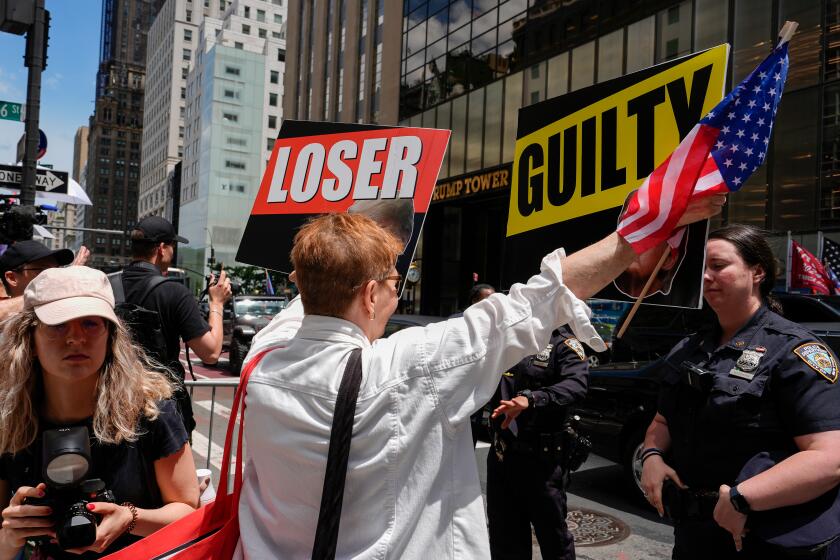AN APPRECIATION : Keith Haring: Another Artistic Voice Silenced
Death is never an occasion for rejoicing in this culture, but it is particularly poignant when visited on the young, the bright and the talented. Keith Haring was all those things--an artist of cheek, energy and optimism. He amused an audience that spilled well beyond the borders of the New York art world. Actually, he rather leaked from the larger world into the art world since he came to notice painting graffiti in the streets--bright red and yellow gingerbread-men radiating shiny lines of can-do optimism and Big Apple chutzpah.
Once he had made a name, he was still not above doing T-shirts with his barking dogs and pyramids on them, designing a backdrop for a disco, muraling the Berlin Wall or raising funds for causes from peace to gay rights. Critics found his work thin and commercial, but as far as he was concerned, the point was to reach people--from rich collectors to admiring kids.
When he died of AIDS in New York last Friday at age 31, the sting of it was worse because it echoed the demise of other art people in a way that is becoming almost thematic--a fugal dirge run through with the sour penny-whistle sound of cosmic irony.
Haring and his art were much in the mold cast by Andy Warhol. Warhol pioneered Pop art and the idea of the artist as an entrepreneur-naif who mirrors the silliness of society by making art that appears as ephemeral as gum wrappers--throw-away art. Warhol swallowed popular culture whole and died in 1987 of a heart attack while in the hospital. He was 58, not old by today’s standards but old enough to have been considered by critics as an artistic wash-up for two decades.
The next year, 27-year-old Jean Michel Basquiat was snuffed out by a drug overdose. The young graffiti superstar had been a friend and protege of Warhol’s.
Basquiat and Haring, young as they were, were regarded as passe in the art world’s fast lane. Warhol’s 15 minutes of fame grows ever shorter. When the aesthetic of the disposable comes to equate with disposable lives, we don’t even want to think about it.
In art circles there is something close to a universal complaint that art isn’t as good as it should be or as it used to be. Art is found evermore involved in extra-artistic issues--venal ones like the grab for quick money and easy notoriety or serious ones like the environment, politics and human rights.
Put that together and it sounds like a call for urgency--don’t worry about making it good, just make it while there is time. The world is moving at flank speed and no one is quite sure whether it is coming together or falling apart.
Nowhere does that metaphor coalesce more ominously than in the plague of AIDS. The roster of its artist victims keeps growing, from those as well-known as Robert Mapplethorpe to promising people from Nicholas Wilder to Don Sorenson, Jay Philips and Carlos Almaraz.
AIDS--as Susan Sontag insists--is not a curse from the gods or a glamorous tragedy, it’s just a disease. But it is a disease that is dramatically shortening lives, leaving the culture poorer and hung with unripened fruit because, increasingly, time runs out too soon.
More to Read
The biggest entertainment stories
Get our big stories about Hollywood, film, television, music, arts, culture and more right in your inbox as soon as they publish.
You may occasionally receive promotional content from the Los Angeles Times.






